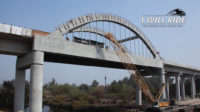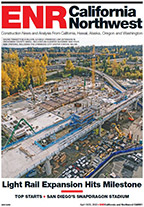The California High-Speed Rail Authority released a revised business plan that is $30 billion cheaper by blending services with existing transportation infrastructure in both the North and the South rather than building a fully dedicated track system that was projected to cost $98.1 billion in the original draft plan.
At an unveiling today in Fresno, Jim Hartnett, an authority board member, said that the $68.4-billion plan will make early investments in systems like Caltrain in the North that will lead to early benefits for those commuters who utilize that system.
“By working in cooperation with regional and local transportation agencies on a memorandum of understanding, which still requires authority board approval, hopefully we can see electrification of the track from San Francisco to San Jose by 2020 and that will benefit folks in the Peninsula greatly,” he said.
Under the revised 2012 Business Plan, construction begins this year on the 300-mi Initial Operating Section, stretching from Merced to the San Fernando Valley.
The key changes to this revised business plan include:
- Constructing 300 mi of electrified rail from Merced to San Fernando Valley in 10 years;
- Improving existing rail service in the Bay Area and Los Angeles regions to prepare those systems for high-speed rail service;
- Cutting $30 billion in costs, through the blended approach, cost savings and inflation assumptions; and
- The potential to access cap and trade funds as a backstop to federal funding.
Construction of the entire 520-mi rail system will finish in 2028, said the authority. Six billion dollars in funding has already been identified for the initial segment, which includes $3.3 billion in federal stimulus funding and $2.7 billion in state Proposition 1A bond proceeds to fund the project through 2017. Cap and trade funds are available, as needed, upon appropriation, as a backstop against federal and local support to complete the initial operating section. No operating subsidy will be required.
The authority said the plan will generate more than 100,000 job years of employment over the next five years, the equivalent of 20,000 jobs per year, and will provide substantial environmental benefits, eliminating 320 billion vehicle mi traveled over the next 40 years and three million tons of carbon emissions annually.
The revised business plan must be approved by the authority’s board of directors, who will meet in San Francisco on April 12.



Post a comment to this article
Report Abusive Comment